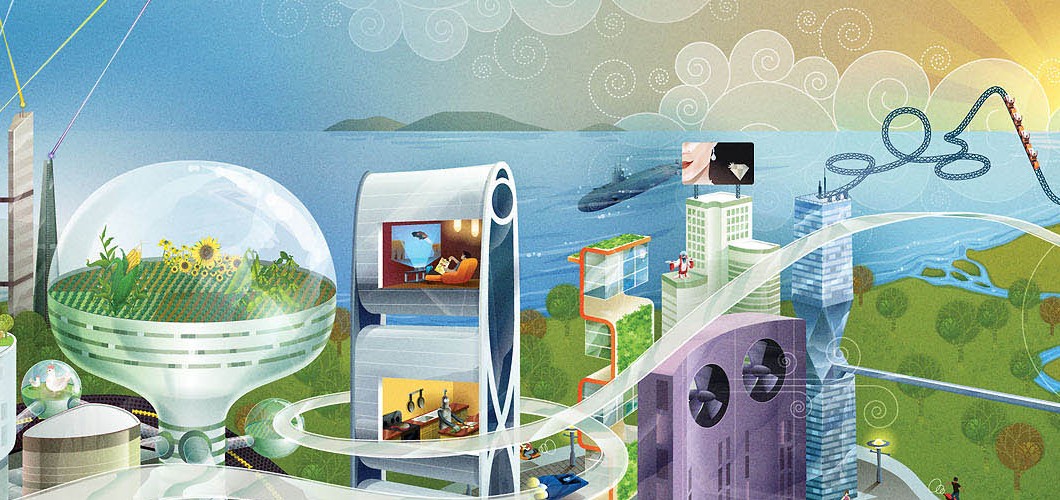On Monday morning, there was at least one person in Montreal who wasn’t singing The Boomtown Rats classic I Don’t Like Mondays. But for Stéphane Goyette, it wasn’t any ordinary Monday. It was his first day as Director of Montreal’s Smart and Digital City Office, which was specifically created to help our city become an internationally recognized leader in the field.
To welcome him and make his first day run a little smoother, we put together an overview of the Startups for a Smart Montreal event, which took place this past August 5 at Google Montreal.
The goal of this event: help put Montreal “on the map” of smart cities. More specifically, a city is not crowned as smart by a gratuitous quiz on Facebook. Rather, Wikipedia states: “A city can be defined as ‘smart’ when investments in human and social capital and traditional (transport) and modern (ICT) communication infrastructure fuel sustainable economic development and a high quality of life, with a wise management of natural resources, through participatory action and engagement.”
As one of the partners for this event, organized by cllbr, Tout le monde UX and Open North, TP1 was on hand to contribute to the dialogue. Here are some of my observations, as well as those noted by my colleague Sylvain Letellier, our Lead, Research and Measurement at TP1.
Intelligence, not just found in data
Cynthia Savard Saucier
As a guest moderator, I had the opportunity to facilitate a group discussion about user experience.
What struck me the most during our session was the realization that intelligence is not only generated by data or technological solutions. A solution doesn’t have to be technological in order to be effective!
Also, Matthieu Dugal, facilitator and reporter on the La Sphère radio show, gave an excellent introduction on the importance of not relegating urban planning, architecture and design to a separate category, as these domains could very well contribute to making a city’s smart.
During the discussion, participants proposed a variety of solutions – and most of them were based on the same foundation; that is, let’s reclaim solutions that already exist. After all, if the city proposes new services, meanwhile citizens have yet to appropriate existing solutions, doesn’t that just turn out to be a waste of money?
For example, borough meetings. Participation in borough meetings is very low, so a video conference platform was built to encourage more people to tune it. But to no avail. To me, these meetings are long and boring! Broadcasting borough meetings on the web won’t make them any more interesting.
As a user experience designer, I first survey website users to better understand their needs and motivations before I start presenting clients with solutions for their redesign. Following the example of UX, we first need to identify the needs of citizens before we start recommending solutions.
Communication first
Sylvain Letellier
Since the concept of the “smart city” is still evolving, the participants at this event mostly comprised budding evangelists who eagerly await the technical, organizational or economic solutions that will provide the data they’re looking for. In the workshops on big data and design, this desire fuelled many discussions on how to obtain more data.
Very few participants stressed the importance – which I see as crucial – of quality data. Whether it be how sources are structured (optimizing information in order to speak the same language) or how it’s all presented (making data attractive), a truly smart city must first know how to communicate.
As was frequently the case with proposed examples, the risk that noise could drown out the message was high. The average citizen, instead of benefiting from fresh transparency, ends up being overwhelmed by an unending wave of raw data.
To give the public – and not just data geeks – what they really want, numerous disciplines must pool their efforts and look beyond the technological aspects. We can hope, however, that with time, major players, both public and private, will rise up to meet these challenges.
Taking these ideas further
The concept of the “smart city” is fuelling plenty of speculation. In order to take these ideas to the next level, I encourage you to read a report that was produced after the August 5 event. Written by a team of experts, this exhaustive document details how we can follow-up on all the group discussions that went on that night.
The City of Montreal also has a brief document titled, Montreal, Smart and Digital City, which explains the four axes of the City’s strategy.
Also, the City of Montreal website offers an impressive array of data sets on the Open Data Portal (French only). You can learn how many people use city libraries, consult a list of drop-off points for the Livres dans la rue program for kids or find out how many bike racks there are in the city.
If this subject is interesting to you and you’d like to discuss the matter with Mayor Denis Coderre, there’s a Les Affaires event planned for October 22: Ville intelligente: Innovez pour réduire vos coûts d’opérations et améliorer les services aux citoyens (French only).
llustration credits : Huan Tran


